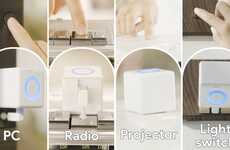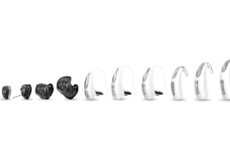The Conceptual 'Hearingbot' Has Smart Home Connectivity
Michael Hemsworth — December 17, 2020 — Tech
References: zozo.jp & yankodesign
Smart home solutions focus primarily on voice control and auditory signals to keep users connected which leaves deaf and hard-of-hearing users unable to make use of them, so the conceptual 'Hearingbot' has been created as a more inclusive alternative.
The artificial intelligence (AI)-powered robot features integrated smart home system control that will interpret gestures and sign language in order to activate or change settings. The unit will communicate with the user using subtitles to allow for a more seamless level of interaction.
The conceptual 'Hearingbot' is the design work of the Fountain Studio, JC HAM and Boseon Kwon, and identifies what can be done to make smart solutions more inclusive going into the future. This will help to keep users of all kinds accommodated instead of feeling left out of the mix.
The artificial intelligence (AI)-powered robot features integrated smart home system control that will interpret gestures and sign language in order to activate or change settings. The unit will communicate with the user using subtitles to allow for a more seamless level of interaction.
The conceptual 'Hearingbot' is the design work of the Fountain Studio, JC HAM and Boseon Kwon, and identifies what can be done to make smart solutions more inclusive going into the future. This will help to keep users of all kinds accommodated instead of feeling left out of the mix.
Trend Themes
1. Smart Home Connectivity - The 'Hearingbot' robot's integration of smart home system control opens up disruptive innovation opportunities in the smart home industry.
2. Gesture Recognition - The use of gesture recognition technology in the 'Hearingbot' presents disruptive innovation possibilities in various industries such as robotics, healthcare, and communication.
3. Inclusive Design - The 'Hearingbot' highlights the need for inclusive design in the development of technological solutions, offering disruptive innovation potential in multiple industries.
Industry Implications
1. Smart Home - The 'Hearingbot's' smart home connectivity feature presents disruptive innovation opportunities in the smart home industry.
2. Robotics - The gesture recognition technology utilized by the 'Hearingbot' opens up disruptive innovation possibilities in the robotics industry.
3. Healthcare - The application of gesture recognition technology in the 'Hearingbot' could lead to disruptive innovation in the healthcare industry for communication with deaf and hard-of-hearing individuals.
6.2
Score
Popularity
Activity
Freshness






















